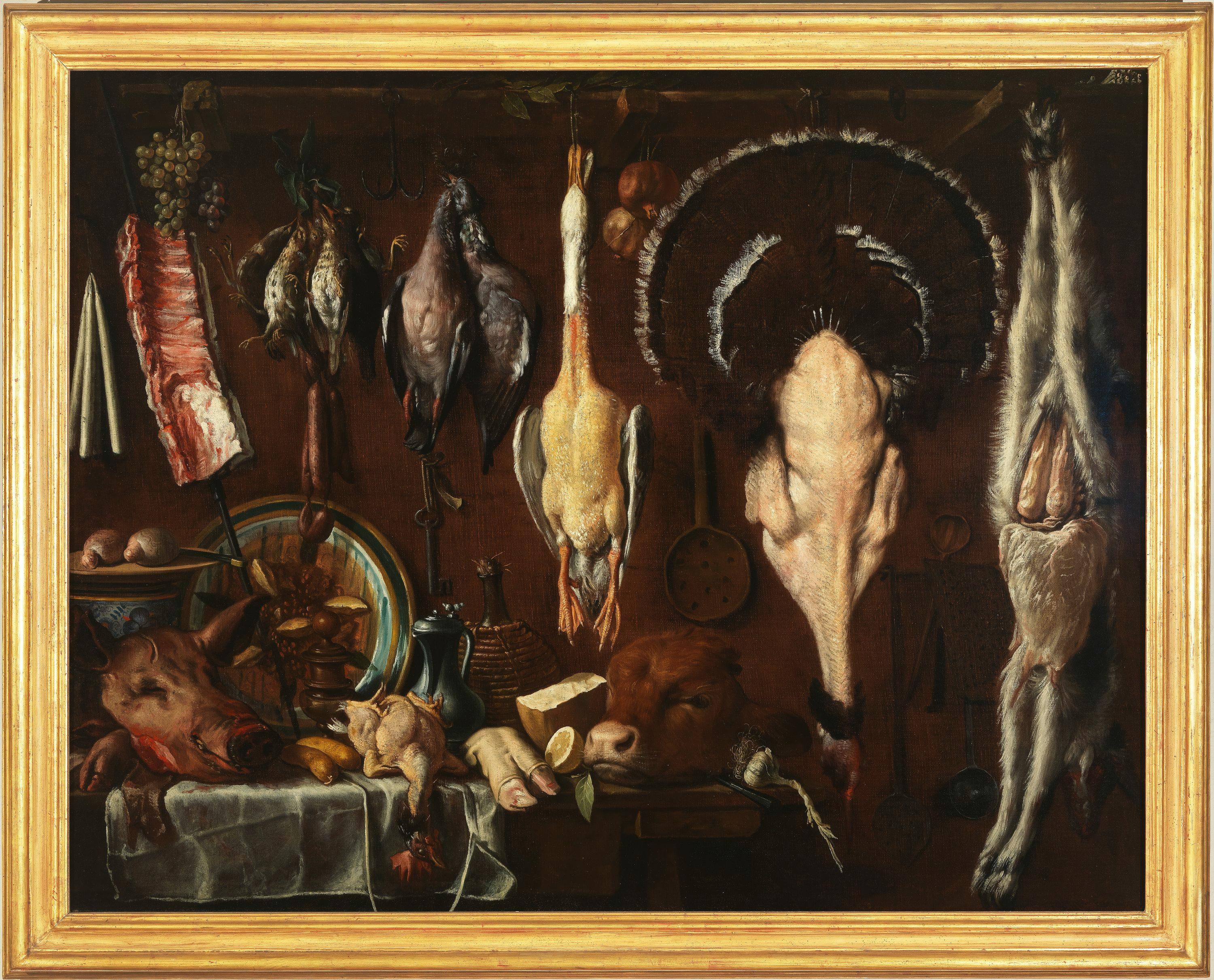Pantry with pig’s head and trotter, calf’s head, turkey, poultry and other food
Jacopo Chimenti, known as “l’Empoli” (Florence 1551 - 1640)
Almost in the centre of the painting, under the two birds hanging from a hook, it is possible to see a large key with a label, clearly marked with the date “1621” and, albeit less easy to read, an incomplete inscription that has been painstakingly deciphered as the name of the artist, Jacopo da Empoli. This piece is usually referred to as a companion piece for the still life clearly signed by l’Empoli and dated 1624 (inv. 1890 no. 8441) as they come from the same private collection belonging to Giacomo Arbanasich, from whom they were bought in 1922.
The two paintings - which show differences in technique and also slight differences in composition – are often referred to together using the general name ‘Dispense’ [Pantries] in reference to the rooms dedicated to storing foods found in all large noble palaces in the past.
This still life shows a simple table, partly covered by a tablecloth, laid out at an angle, spread with a large variety of food, including a pig’s head, a calf’s head, a large trotter, a chicken, some sausages, garlic, half a lemon, a round of cheese that has been cut, a pewter jug, a straw-clad flask and a knife balanced precariously on the table (an element also found in the other still life painting by l’Empoli); the wall is hung with various cooking utensils, some game and poultry with the innards on show, and also a joint of meat, hanging next to a large bunch of black grapes. As in other similar still life pieces from the same period, we cannot rule out the presence of hidden references to the vacuity of earthly goods and human pleasures. However, these aspects are generally covered by the clear and sometimes astounding observation of real life and its everyday elements.
Pantry with cask, game, meat and pottery
Jacopo Chimenti, known as “l’Empoli” (Florence 1551 -1640)
